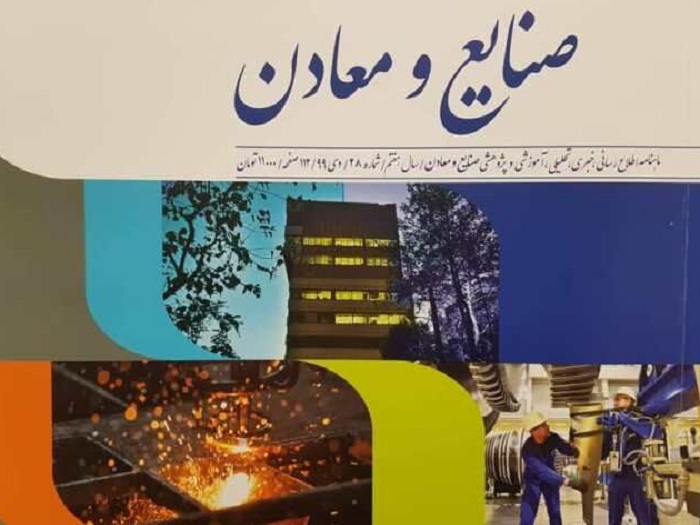Quarterly Journal of Industries and Mines became a monthly

The news, analytical, educational and research magazine "Industries and Mines" was changed from the quarterly to the monthly to the managing director of "Amir Hesam Ishaqi" and published its first issue this week.
According to the International Iranian Stone Exhibition, the specialized magazine "Industries and Mines" has published 27 issues in the form of a quarterly and since its 28th issue in January 2016, it has been published as a monthly.
Curbing inflation and production jumps in the 1400 budget, attractive industries for investment in Iran, mining in Iran, bipolarity of banks and stock exchanges, preferred currency; The main problem of the pharmaceutical industry, the quarterly developments of industrial production, the severity of the damage of sanctions on industrial workshops, the global style of agricultural tourism and the most lucrative businesses in the world, are among the 28th issue of the Journal of Industries and Mines that is now on display.
The policy of this specialized publication is news, analytical, educational and research information in the field of industry and mining, and now it is in its eighth year of publication.
This magazine, as in the past, has been published in full color and with exquisite paper in the form of 112 pages with a price of 11,000 Tomans to the responsible director, Dr. "Amir Hesam Ishaqi", professor of communication sciences in the country's universities and under the supervision of Didar No Cultural and Artistic Institute.
Ishaqi has explained in the "Editor's Note": Since the establishment of the magazine, in the fall of 1392 until the fall of this year, 27 issues have been published quarterly and now, on the eve of the eighth year, its twenty-eighth issue in January with follow-up and audience support and permission. The Ministry of Culture and Islamic Guidance is published as a monthly.
He stated: "Relying on knowledge, skills and observing the principles of professional ethics of journalism, the monthly magazine of industries and mines tries to establish its policy and strategy by creating a bridge between government and governmental institutions in charge of industry and mining with the activists of this sector." "Build four axes of transparency, criticism, questioning and accountability."
According to the professor, "The realization of these strategies depends on strengthening the relationship of each media with ethics and clarifying the mechanism of financing it. For the press, transparency in the economic field is an unavoidable necessity, and according to the press law, the financial dependence of each media must be known. The concealment or concealment of media interference and expenditure leads to a decline in media freedom, a gradual decline in its legitimacy and closure, and on the other hand, monopoly and advertising as the most important source of income can largely guarantee the economic independence of the media, especially the press. »
"Without sustainable self-reliance, no media can insist on its function and charter of professional ethics," said the editor-in-chief of the Journal of Industries and Mines, stating that "the media has to resolve its own financial issues."
"The issue of media economics has always been a challenge and a threat to maintaining the professional and ethical identity of the press, and for many years most editors have not been able to cope with this threat," Ishaqi added.
Pointing out that "media economics" as a field of theoretical and scientific studies has received a great deal of attention from researchers in recent decades, the university professor warned: "Weak financial strength and lack of sustainable mechanisms for The effective support of the government or the government for the fourth pillar of democracy has quietly turned off the light of many presses. »
"The economic death of the media, unlike its political death, is a silent death," he recalled.
The Editor-in-Chief of the Journal of Industries and Mines then emphasized the importance of the media in the development of democracy and economic prosperity: Critical and free presses link democracy to development, and their social role in the context of appropriate, transparent and timely information leads to better allocation. And it becomes more efficient resources and more equitable distribution of facilities, and through information and advertising, brings growth and prosperity to industries and economic stability.
* IRNA










